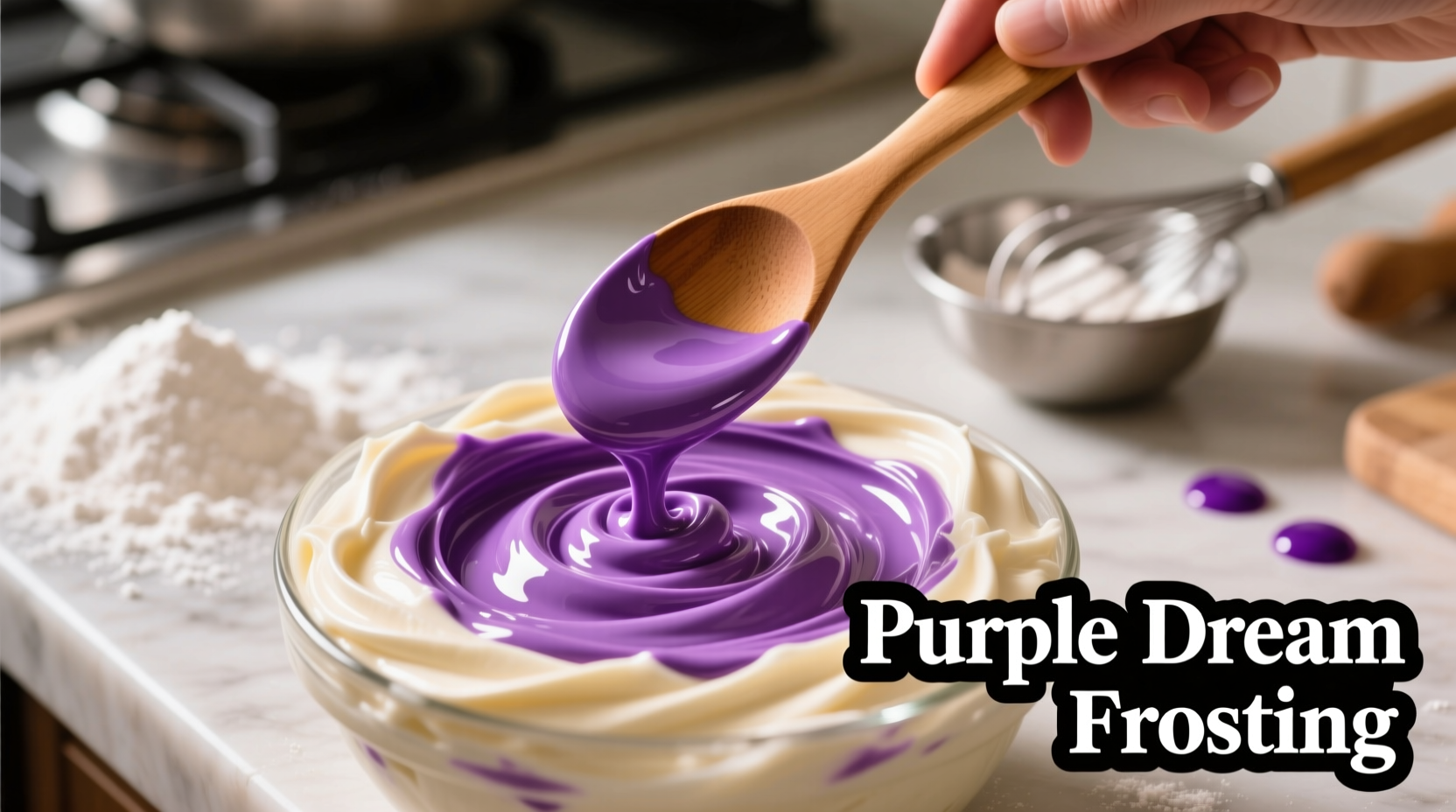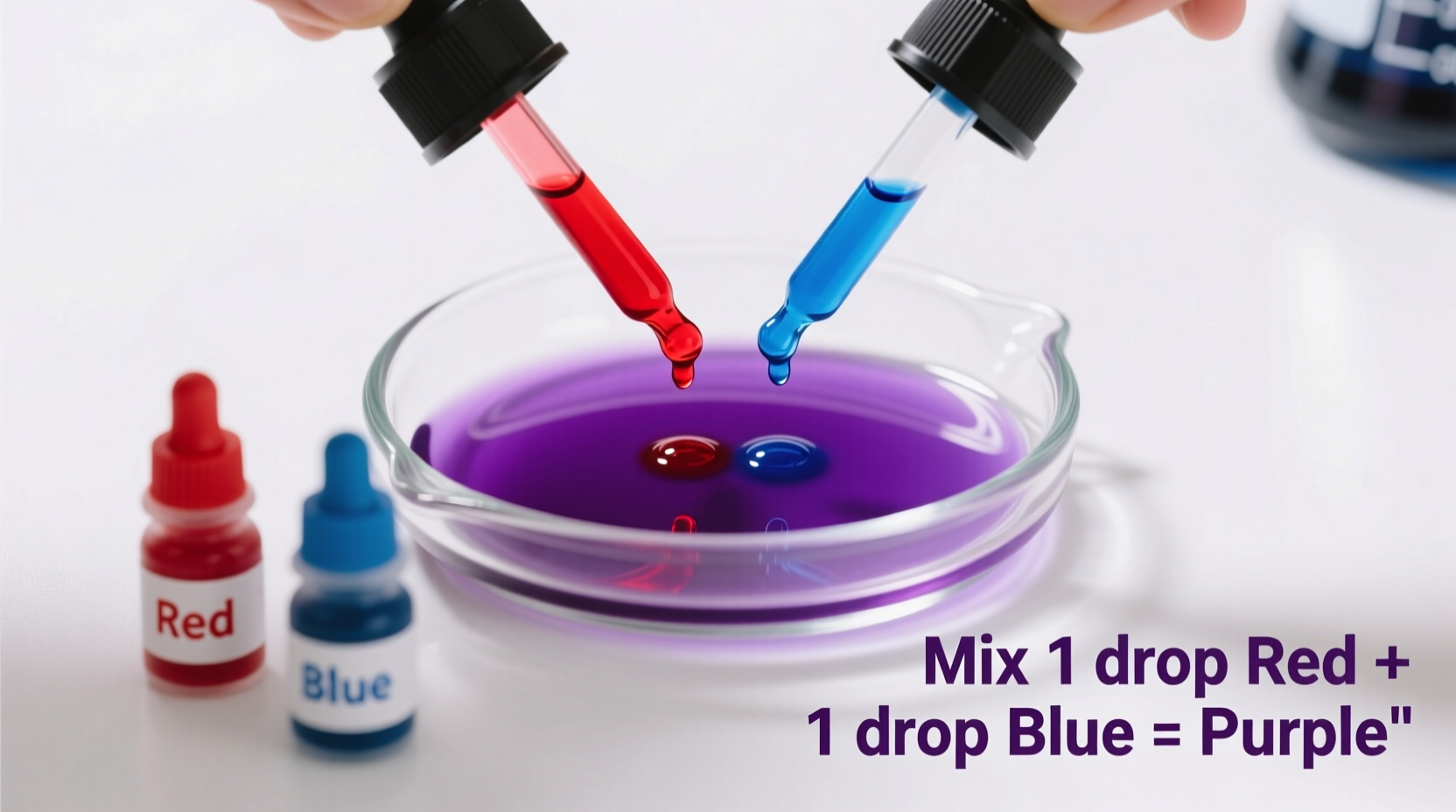Creating the perfect purple shade for your baking projects doesn't need to be frustrating. Whether you're decorating cupcakes for a birthday party or crafting holiday treats, understanding the simple color mixing principles behind purple food coloring ensures consistent, vibrant results every time. This guide provides professional-tested ratios, troubleshooting tips, and practical applications so you can achieve your ideal purple without wasting ingredients or time.
The Color Theory Behind Perfect Purple
Purple sits between red and blue on the color spectrum, making it a secondary color created by mixing two primary colors. When working with food coloring, the quality of your base colors significantly impacts the final result. Professional bakers consistently report that gel-based food colorings produce more vibrant purples than liquid varieties because they contain higher pigment concentrations without adding excess liquid to your recipes.
| Color Ratio (Red:Blue) | Resulting Shade | Best For |
|---|---|---|
| 1:1 (equal parts) | Muted purple | Subtle coloring in light batters |
| 2:1 (more red) | Rosy purple/magenta | Pink-themed desserts, Valentine's treats |
| 1.5:1 | Vibrant true purple | Birthday cakes, general purpose |
| 1:1.5 (more blue) | Deep violet | Easter eggs, royal-themed desserts |
Step-by-Step Purple Food Coloring Guide
Follow these professional-tested steps to create perfect purple every time:
- Start with quality ingredients - Use gel-based food coloring for intense results without altering recipe consistency
- Prepare your base - Work with white frosting, icing, or batter for clean color results
- Begin with the blue - Add 10 drops of blue food coloring to establish your foundation
- Gradually incorporate red - Add red coloring 5 drops at a time while mixing thoroughly
- Adjust as needed - For brighter purple, add more red; for deeper violet, add more blue
- Allow time for development - Colors often deepen over 15-30 minutes as pigments fully integrate
Common Purple Coloring Challenges and Solutions
Many home bakers encounter these common issues when creating purple food coloring:
The Brownish Purple Problem
When purple turns muddy or brown, you've likely added too much red relative to blue. Food science research from the Culinary Institute of America explains that red contains yellow undertones which, when overused, shift purple toward brown. Fix this by adding small increments of blue (1-2 drops at a time) while mixing thoroughly.
Weak Color Intensity
If your purple appears washed out, you're probably using liquid food coloring which requires larger quantities that can alter recipe consistency. According to professional baking resources at King Arthur Baking Company, gel colors provide 4-6 times more pigment concentration than liquid varieties, allowing you to achieve vibrant results without affecting texture.

Advanced Purple Variations
Once you've mastered basic purple, experiment with these professional variations:
Lavender (Soft Purple)
Combine 5 drops of blue with 3 drops of red in 1 cup of white frosting. This delicate shade works beautifully for spring desserts and baby shower treats. Remember that lighter shades show more variation based on your base ingredient's natural color—egg white-based frostings yield cleaner results than butter-based varieties.
Deep Plum
For rich, jewel-toned purple, use a 1:2 ratio (blue:red) with the addition of a single drop of black or brown food coloring. This technique, documented in professional pastry chef resources, creates dimension by subtly lowering the color's brightness while maintaining its purple character.
Contextual Considerations for Purple Food Coloring
Understanding these contextual boundaries prevents common mistakes:
- Medium matters - Frosting requires less coloring than cake batter due to higher fat content
- Time sensitivity - Some colors deepen significantly after 1-2 hours (especially in buttercream)
- Temperature effects - Cold environments can slow color development in refrigerated items
- Light exposure - Direct sunlight may cause fading in displayed desserts over time
Troubleshooting Your Purple Results
When your purple isn't turning out as expected, consider these solutions:
| Problem | Solution |
| Purple turned brown | Add small increments of blue (1-2 drops) while mixing thoroughly |
| Color too weak | Switch to gel coloring or reduce base ingredients slightly |
| Uneven coloring | Mix base thoroughly before adding color; use room temperature ingredients |
| Color changed after baking | Some colors react to pH; add color after baking when possible |
Professional Tips for Consistent Results
Seasoned bakers recommend these techniques for perfect purple every time:
- Keep a color mixing journal noting exact ratios for future reference
- Work with small test batches before coloring entire recipes
- Use toothpicks for precise color additions when fine-tuning shades
- Remember that colors appear more intense in containers than when spread
- Allow 30 minutes for colors to fully develop before making final adjustments











 浙公网安备
33010002000092号
浙公网安备
33010002000092号 浙B2-20120091-4
浙B2-20120091-4